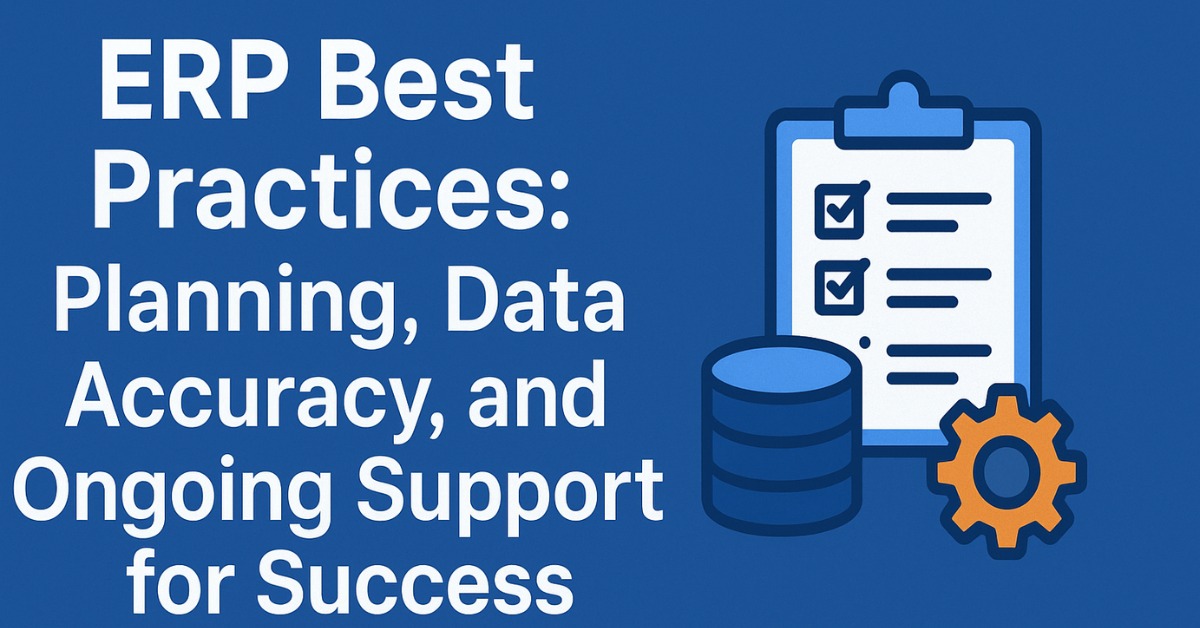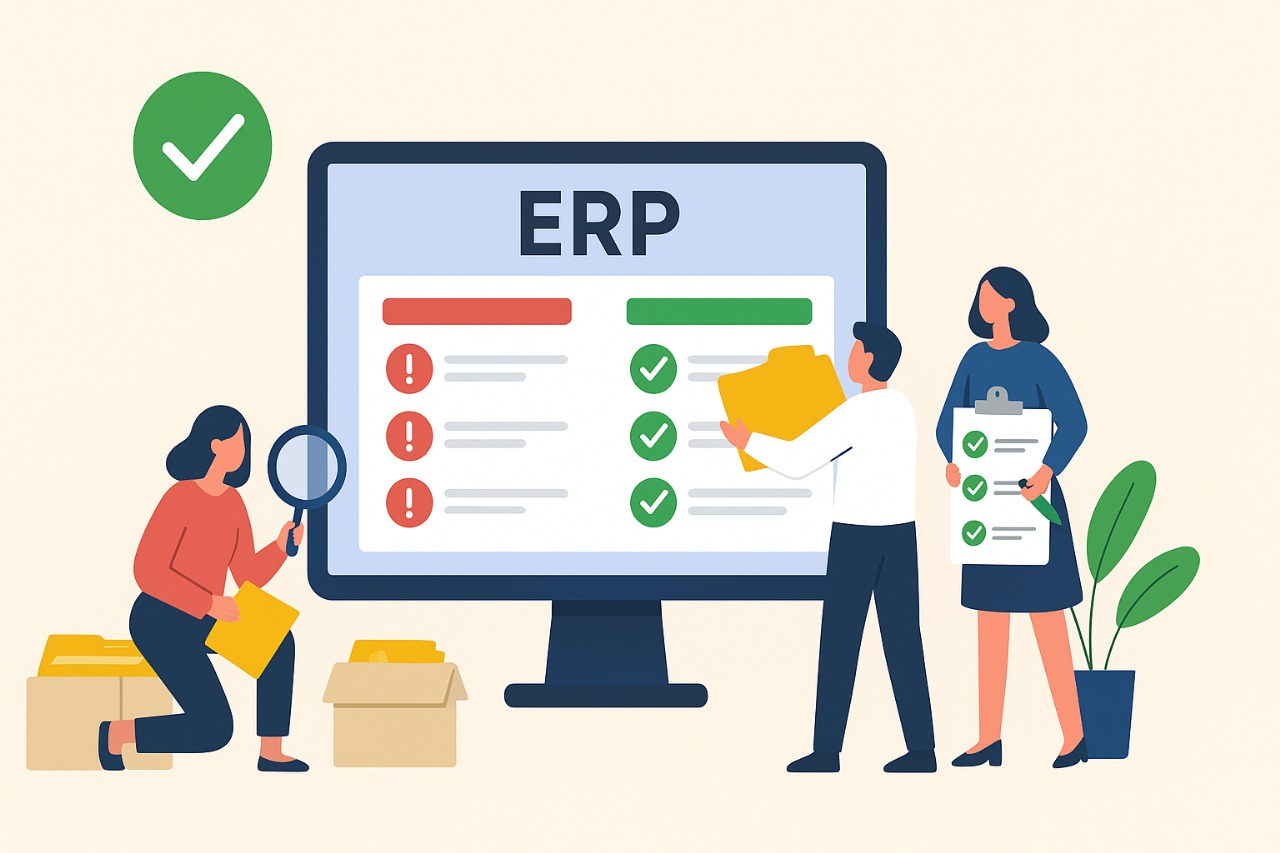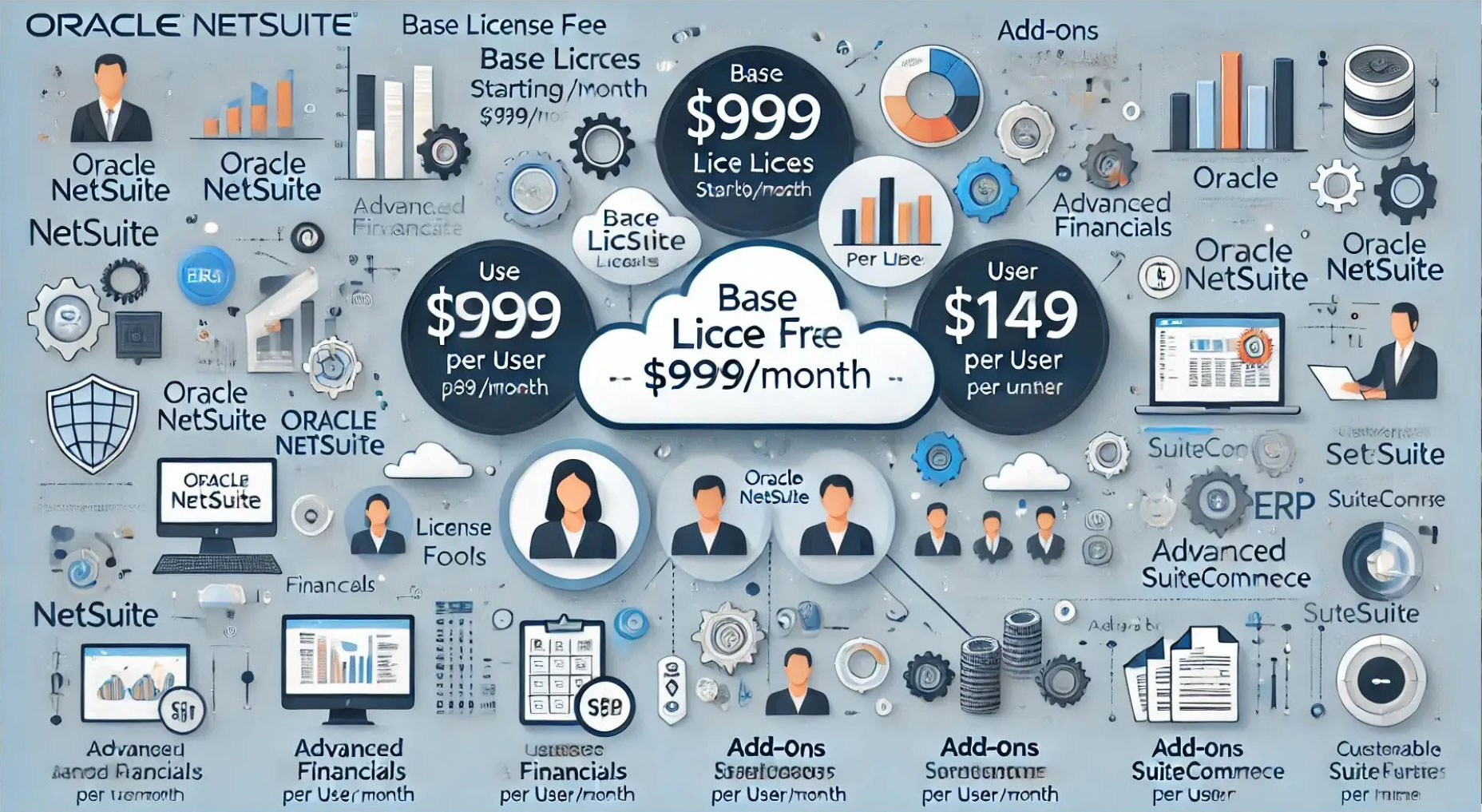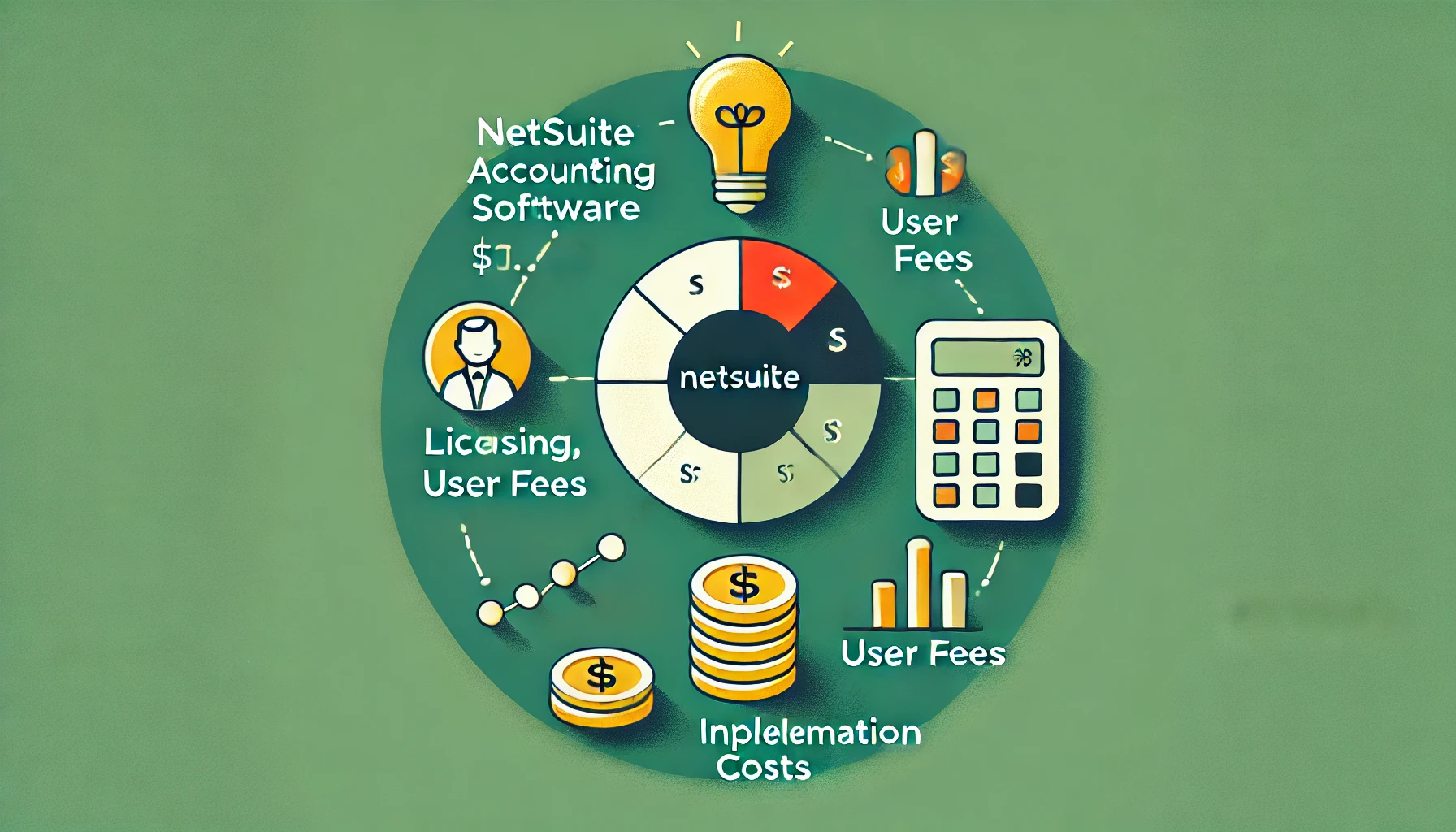Enterprise Resource Planning systems serve as the backbone of modern organizations. They integrate core business processes, provide real-time visibility, and allow companies to scale with confidence. However, success with ERP depends less on the software itself and more on how it is planned, implemented, and supported.
When companies overlook critical steps such as planning, data quality, and long-term support, ERP initiatives often fail to deliver the expected return on investment. On the other hand, organizations that adopt ERP best practices set themselves up for sustained growth and efficiency. This blog explores practical strategies around planning, data accuracy, and ongoing support that ensure your ERP project succeeds both at launch and in the long term.
Table of Contents
ToggleWhy ERP Projects Struggle Without Best Practices
ERP implementations are complex, touching multiple business functions and requiring coordination across teams. Common pitfalls occur when organizations underestimate effort or skip critical steps.
1- Unclear goals: Without defined business outcomes, ERP becomes a technical exercise rather than a business transformation.
2- Weak data foundations: Poor data quality leads to bad reports, compliance risks, and frustrated users.
3- Insufficient training: Users resist the system or use workarounds when they are not trained properly.
4- Lack of ongoing support: Many projects lose momentum after go-live when support structures are not in place.

Strong planning ensures that the ERP system aligns with business goals and reduces risks during implementation. Organizations that spend time on upfront preparation see smoother adoption and faster ROI.
1- Define clear objectives: Document business goals such as faster reporting, better compliance, or improved efficiency. Link ERP configuration directly to these outcomes.
2- Build a strong project team: Include IT, finance, operations, and end-users. Assign an executive sponsor to keep alignment with strategic priorities.
3- Map business processes: Document current processes and decide which to improve or standardize before ERP goes live. Avoid lifting inefficiencies into the new system.
4- Set realistic timelines: Balance speed with quality. Allow time for testing, training, and change management to avoid rushed rollouts.
Data Accuracy: Ensuring Reliable Outcomes
Data accuracy determines how much value an ERP system delivers. Accurate, consistent, and complete data builds trust in reports and ensures compliance. Poor data quality, by contrast, creates errors that ripple across departments.
1- Data cleansing before migration: Remove duplicates, standardize naming conventions, and validate accuracy before moving data into the ERP.
2- Strong master data governance: Assign data owners who maintain customer, vendor, item, and account masters. Review them regularly for accuracy.
3- Validation rules: Configure ERP fields with required formats, mandatory values, and automated checks to prevent bad data entry.
4- Ongoing audits: Monitor data quality with periodic reviews, exception reports, and corrective actions to preserve accuracy long after go-live.
Ongoing Support: Driving Continuous Value
An ERP system is not a one-time project. Ongoing support ensures the system evolves with business needs and continues to deliver value. Without it, users fall back to manual workarounds, updates go uninstalled, and processes stagnate.
1- Helpdesk and ticketing: Provide a structured way for users to report issues, track resolutions, and share feedback.
2- Continuous training: Offer refresher sessions and materials to help employees adapt to updates and new features.
3- Regular system updates: Apply vendor patches, upgrades, and new modules to keep ERP secure and aligned with industry practices.
4- Performance monitoring: Track system KPIs such as uptime, user adoption, and process efficiency to identify improvement opportunities.
Integrating Planning, Data Accuracy, and Support
Each pillar—planning, data accuracy, and ongoing support strengthens the others. When integrated, they form a framework for long-term ERP success.
1- Plan with data in mind: Include data cleansing and governance in the project plan. Treat data as a core deliverable, not a side task.
2- Support planning outcomes: Use support structures to reinforce the original objectives and measure progress against them.
3- Data-driven support: Leverage accurate ERP data to track user adoption, process efficiency, and compliance in real time.
4- Feedback loop: Use lessons learned from ongoing support to refine planning for future phases and expansions.
Benefits of Following ERP Best Practices
Companies that follow proven ERP best practices achieve faster ROI and avoid costly mistakes. They also build resilience in their systems and teams.
1- Higher user adoption: Employees trust the system when it delivers accurate data and they have the training to use it effectively.
2- Faster reporting and insights: Clean data and standardized processes allow for real-time dashboards and decision-making.
3- Lower compliance risk: Audit trails, accurate records, and standardized reporting reduce regulatory exposure.
4- Long-term scalability: Ongoing support and regular updates ensure the ERP system grows with the business rather than holding it back.
Future Outlook: Evolving ERP Best Practices
As ERP systems evolve, so do best practices. Companies that keep pace with technology trends will stay ahead.
1- AI and automation: Expect ERP systems to offer more predictive insights, automated reconciliations, and anomaly detection.
2- Cloud scalability: Cloud ERP platforms will support faster upgrades and global expansions without heavy infrastructure.
3- Integration with emerging tools: ERP systems will connect seamlessly with AI-powered analytics, CRM, and industry-specific applications.
4- Proactive support models: ERP vendors and partners will move from reactive ticket resolution to predictive support based on system usage data.
Conclusion
ERP systems succeed when organizations adopt proven methods that balance technology with people and processes. Careful planning ensures alignment with business goals. Data accuracy delivers reliable outcomes and builds trust. Ongoing support keeps the system relevant, scalable, and user-friendly.
By embedding these ERP best practices into your approach, you create a framework that reduces risk, improves efficiency, and enables sustainable growth. Whether you are preparing for your first ERP rollout or optimizing an existing system, success lies in treating ERP as a long-term journey. Companies that get planning, data accuracy, and support right will not only achieve faster ROI but will also set the stage for ongoing transformation and competitive advantage.




